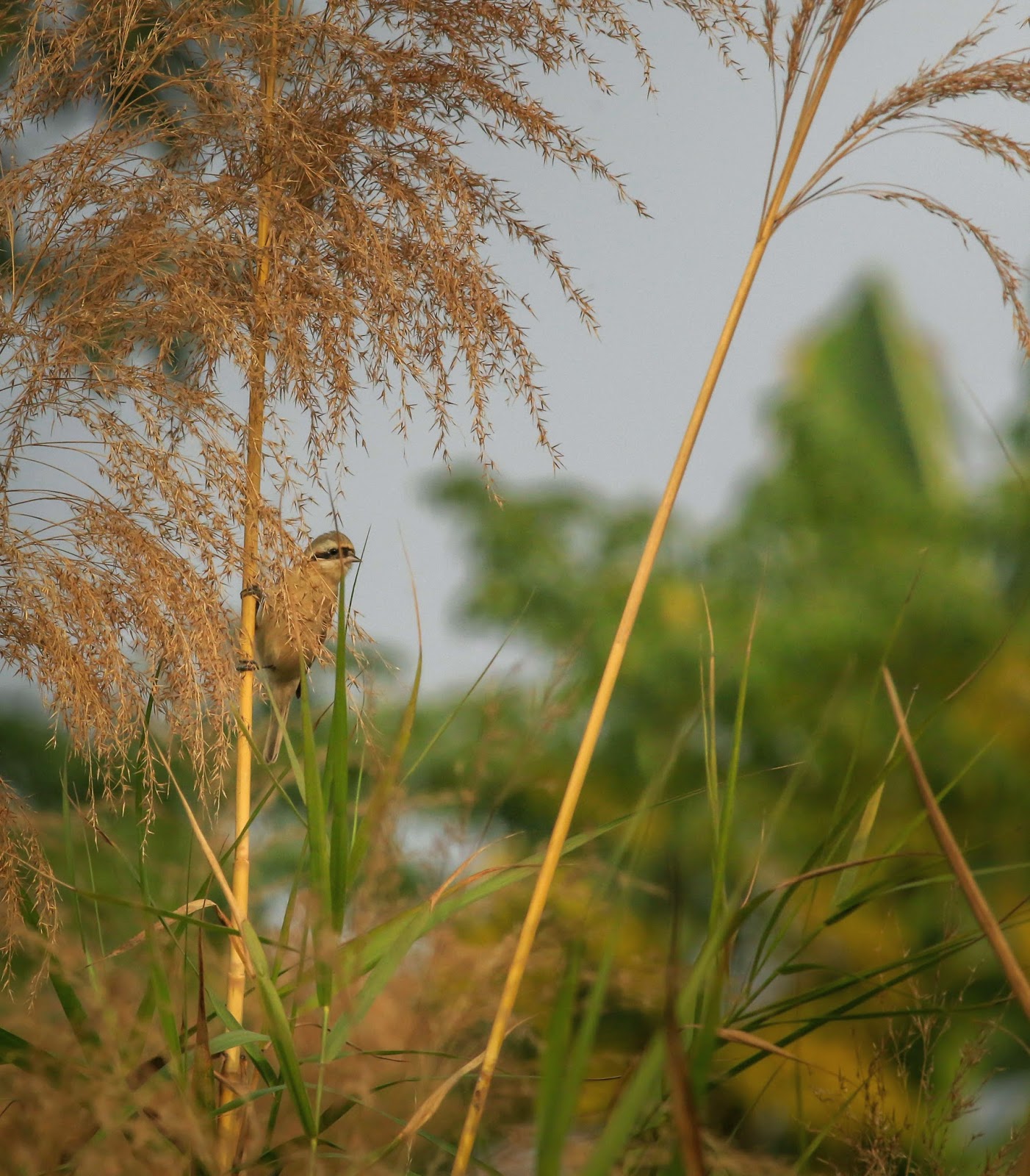Nevertheless, just need to keep getting out - even
when it feels like there's NOTHING to see!
Below some shots taken recently
around the city, of both resident and wintering birds:
Local Masked Laughingthrush (still alive, quite amazing !!!)
- one out of the two or three in a small flock
male Chinese Penduline Tit in its favorite habitat
Flock of 5 individuals found at a small pond on 30th December, still hanging around mid-January. Hopefully they will stick around all winter.
Vagrant in Vietnam
Flock of 5 individuals found at a small pond on 30th December, still hanging around mid-January. Hopefully they will stick around all winter.
Vagrant in Vietnam
An Indian Roller shaken by the
wind. Recently found a pair around the city.
A common South Asian species,
but surprisingly scarce in East and West Tonkin (northeastern range limit?).
Not recorded in Robson for East Tonkin.
Hmm.... what’s that ? A dull brown guy with 2 obvious wing-bars which
turned out to be...
....a juv. Common Rosefinch (broader buffy wing-bars, richer brown tone above than the ad. female). It did show briefly, this is the best shot I could get.
Grey-capped Greenfinch feeding on Parthenium histerophorus - an invasive weed common in field margins
Brownish-flanked Bush-Warbler
Photographing this skulker needs luck and a bit of perseverance.
Rufous-gorgeted Flycatcher
And here's a bonus non-bird - an Oriental Garden Lizard Calotes versicolor enjoying the winter sun... An amazing looking little chap.
A quite common sight in cultivation, thickets.This is a male showing breeding colors. A nice consolation prize when there are no birds around!




















































